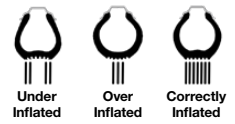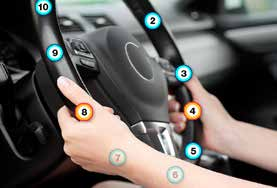
All Locations Closed for Martin Luther King's Birthday
All locations are closed Saturday 17 Jan, 2026.
Introduction Continued
Class D Provisional License Conditions
- No driving between the hours of 12:00a.m. and 5:00a.m. No exceptions.
- During the first six months after issuance, no driving with passengers who are not members of the driver's immediate family.
- For the second six month period, no driving with more than one passenger under the age of 21 who is not a member of the driver's immediate family.
- After one year from the date of issuance, no more than three passengers under the age of 21, who are not members of the driver's immediate family.
Driving in the 21st Century
Improvements in auto and highway design also have increased highway safety. Many new cars are equipped with safety features that dictate basic vehicle control procedures. Drivers must understand these new technologies and the need for basic vehicle maintenance.
Tires, wheels, brakes, shock absorbers, drive train, steering and suspension systems function together to provide a safe, comfortable ride and good gas mileage.
Tires
Properly inflated tires are critical to vehicle control and good gas mileage. Tires should be inflated to the vehicle manufacturer’s recommended pressure printed on the vehicle’s door placard or in the owner’s manual, not the maximum limit listed on the tire sidewall. Under-inflated tires flex too much and build up heat, which can

lead to blowouts or the tread separating and peeling off. The actual size of the tire patch in contact with the road is about the size of a dollar bill. These four dollar bill size patches of rubber in contact with the road surface allow the vehicle to respond to acceleration, braking, and steering. With this narrow margin of safety, it is important to check tire pressure at least once a month. Proper tire tread reduces traction loss on wet surfaces by channeling water through the tread. Government tire ratings are listed on the side of the tire. The “AA” rating is the top traction, speed, and load rating, and “C” is the lowest tire rating.
Prior to entering vehicle check tire pressure using recommended psi located in the door jam of the vehicle. Use a tire pressure gauge to check your psi. If your psi is above the number listed on your door jam, let air out until it matches. If below, add air (or have a retailer help you) until it reaches the proper number.
You may also measure tread depth using the penny test. Once every month, or before you embark upon a long road trip, check your tires for wear and damage problems. One easy way to check for wear is by using the penny test.
- Take a penny and hold Abraham Lincoln’s body between your thumb and forefinger.
- Select a point on your tire where the tread appears the lowest and place Lincoln’s head into one of the grooves.
- If any part of Lincoln’s head is covered by the tread, you’re driving with the legal and safe amount of tread. If your tread gets below that (approximately 2/32 of an inch), your car’s ability to grip the road in adverse conditions is greatly reduced.
Steering Control
Due to changes in steering ratios and effort needed to turn the wheel, steering control requires a balanced hand position on the lower half of the steering wheel.
Hand Position

Good posture while driving is important because it allows a better view of hazards and more control of the vehicle. As a general rule, when gripping the steering wheel, place your left hand at the 9 o’clock position and your right hand at the 3 o’clock position on the wheel. Some manufacturers recommend placing your hands at 8 o’clock and 4 o’clock positions when the vehicle is equipped with steering wheel air bags. Check your owner’s manual or contact your vehicle manufacturer to determine which position is best for your vehicle. Always keep both hands on the wheel unless you are safely performing another driving-related task, such as activating your turn signal.
Steering—Hand-to-Hand/Push-Pull-Slide Steering
This steering technique keeps both hands on the wheel at all times and reduces excessive steering wheel movement. In the event of a frontal crash with a vehicle equipped with an air bag, this steering method also reduces the chance of injury because the arms do not cross over the steering wheel where the air bag is housed.
To push/pull steer:
- the right hand begins at 3 o’clock or below;
- the left hand begins at 9 o’clock or below;
- the right hand moves between the 5 and 2 o’clock position; and
- the left hand moves between the 7 and 10 o’clock positions.
To reverse the push-pull-slide process, allow the steering wheel to slide through the hands until the vehicle’s wheels move to the straight-ahead position.
Hand-over-Hand Steering
In modern cars, this steering technique is used only when the vehicle is moving very slowly or is stopped, and the vehicle needs to be turned in a very sharp angle. For hand-overhand steering:
- one hand grasps the wheel and pushes the wheel up, over, and down;
- at the same time the other hand releases the wheel and passes across the forearm to grip the wheel on the far side;
- this hand then pulls the side of the wheel up, over the top, and down; and
- these movements continue as long as necessary to turn the wheel as much as needed.